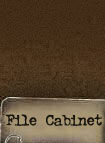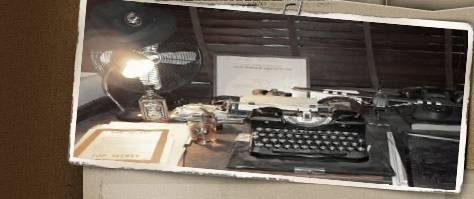|
File
No.:
Title:
Location where German tank
ace Michael Wittmann was
Killed in Action
Investigation made at:
Le Pré Marie (Highway D183A), 14680 Cintheaux,
Département Calvados,
Republic of France
(49°03'59.4"N 0°17'32.8"W)
Period Covered:
8AUG1944
Date 7JUN2019
Case
Classification:
Location of Historic Events
Status
of Case:
Case Closed
|
(click to enlarge)
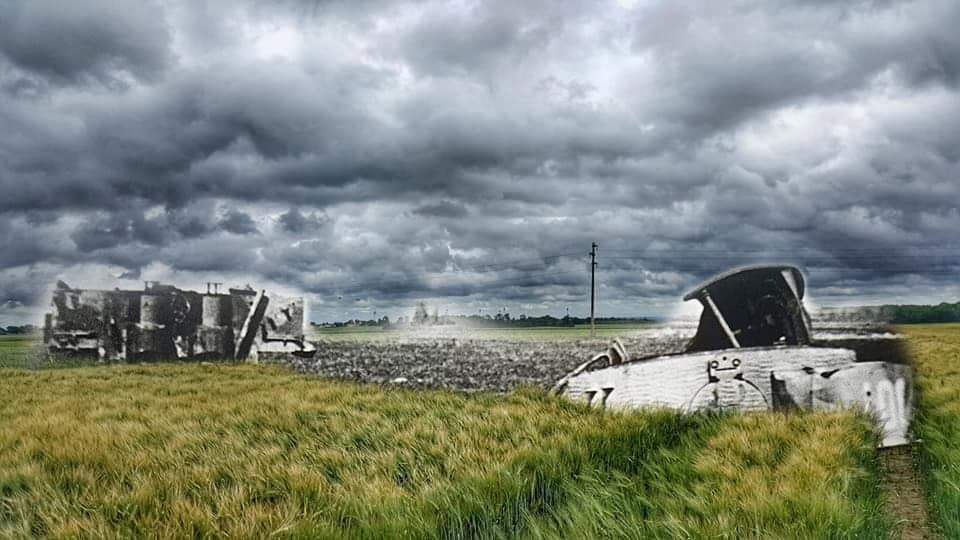
A frequent
visitor to the Battle Detective
Agency’s
Facebook page from
Massachusetts created this
Ghost
Now&Then photo of the location. |
REASON FOR INVESTIGATION
The highest scoring German
Panzer Ace, Michael Wittmann
(DOB 22APR1914 born at Vogelthal,
Dietfurt an der Altmühl,
Germany) was killed during a
counter-attack against British
and Canadian tanks in Normandy,
8AUG1944.
Wittmann’s death went unexamined
until his remains were found in
1983.
It has not been a mystery where
Wittmann met his death but which
Allied unit could claim the kill
has been open to debate until
today. This agency examined the
evidence to determine who killed
the “Black Baron” and visited
the location of the battle.
SYNOPSIS: |
|
The British story is that
trooper Joe Ekins who was a
gunner in "A" Squadron, 1st
Northamptonshire Yeomanry
Regiment on a Sherman Mk. VC
killed Wittmann with a hit from
1100m from the north-western
flank. The evidence for this
theory being that this unit
listed in its War Diary the
kills of five German tanks after
firing at them from the hamlet
of Cramesnil in the direction of
Gaumesnil during the time when
Wittmann was killed. |
|
(click to
enlarge)

For the
complete entry for 8AUG1944 in
the 1st Northamptonshire
Yeomanry RegimentWar
Diary click
here &
here. |
The Canadians on the other hand
claim that a random tank from
"A" Squadron, Sherbrooke
Fusilier Regiment (27th Canadian
Tank Regiment) killed Wittmann
with a shot from the rear left
flank and only a few hundred
meters away from their target.
To substantiate this claim,
Canadian historian Norm Christie
in the first episode of the
documentary series Battlefield
Mysteries titled "Panzer Ace
Michael Wittmann" showed how he
spent months investigating the
"crime scene" of Wittmann's
death In the mid 2000’s. He also
did a forensic investigation of
remnants of Wittmann’s tank
which are stored in a farmers
barn close to where the action
took place. He used surveyors,
overhead aircraft, placed men
and mocked up machines in every
reported position of the action.
But his simple conclusion comes
down to: "The Canadian tanks
where closer to Wittmann's tank,
so they must have killed him".
|
|
(click to
enlarge)

The
battlefield seen from the D183
overpass on 7JUN2019 |
|
CONCLUSION:
The most plausible theory
however is provided by Brian A.
Reid in Appendix E "Who killed
Michael Wittmann?" of his book
"No holding back. Operation
Totalize, Normandy, August
1944", 2004 Stockpole Military
History Series, ISBN
978-0-8117-0584:
"Study of the available
photographs of the scene
indicate that Wittmann’s tank
was facing more or less parallel
to the Caen-Falaise Road,
perhaps inclined a bit towards
Cramesnil. As the only damage to
the tank that could have caused
the explosion was on the left
rear of the hull, this rules out
both of the British armoured
regiments, even if they could
have observed or even hit that
tank from their positions." |
|

Diagram of damage on Tiger
"007"of the "SS Schwere Panzer
Abteilung 101"
From "No
holding back.
Operation Totalize, Normandy,
August 1944", by Brian A. Reid |
|
Not only were the Sherbrooke
Fuseliers in closer proximity to
the target, but their position
was also in line with the
ballistic trajectory of the kill
shot which came from Wittmann's
left rear flank. |
By elimination, that leaves
the Sherbrooke Fusilier Regiment
as the only unit to have been in
a position to have been actively
engaging Wittmann's Tiger.
[…].
After an examination of the
available evidence, the most
likely conclusion is that a
Sherman Firefly of the
Sherbrooke Fusilier Regiment
destroyed Tiger commanded by SS-Hauptsturmführer
Michael Wittmann at some time
between 1230 and 1255 hours
8
August 1944.”
|
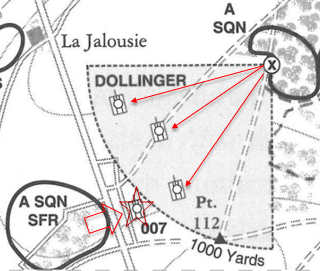 |
Reid goes on to describe how
futile this discussion actually
is:"It should be emphasized
that the truly important thing
is that British and Canadian
soldiers destroyed Five Tigers
as well as a number of other
AFV’s, this defeating the left
wing of SS-Oberführer Kurt
Meyer’s counterattack. The death
of Wittmann was no more than an
incidental result of the battle.
It may be more than coincidence
that this was the only area
where the Phase 2 forces were
able to make any substantial
gains later this afternoon.
One last point – and an
important one – the accident of
fate that saw Wittmann fell prey
to a Sherbrooke Fusilier tank
does not mean that 1
Northamptonshire Yeomanry and
144 Regiment RAC were in any way
inferior to the Canadian unit in
skill or training. It was a case
of pure blind chance that the
path Michael Wittmann chose led
into the sights of a Canadian
Sherman. Given the slightest of
changes in circumstances, he
could just as easily have fallen
prey to British tank" |
Field Grave
After World War Two, the
bodies of Michael Wittmann and
his Tiger tank crew were buried
in an unmarked field grave. In
1983 their mortal remains were
found in a pasture next to the
D183A highway which runs
parallel to the Route National
N158 Expressway. From a German
army "Erkennungsmarke"
identification disk from another
crew member and the pistol that
Wittmann always carried in his
uniform pocket the men were
positively identified and
subsequently reburied in the
nearby German military cemetery
in La Cambe.
|
(click to
enlarge).jpg) |
|
(click to
enlarge)
 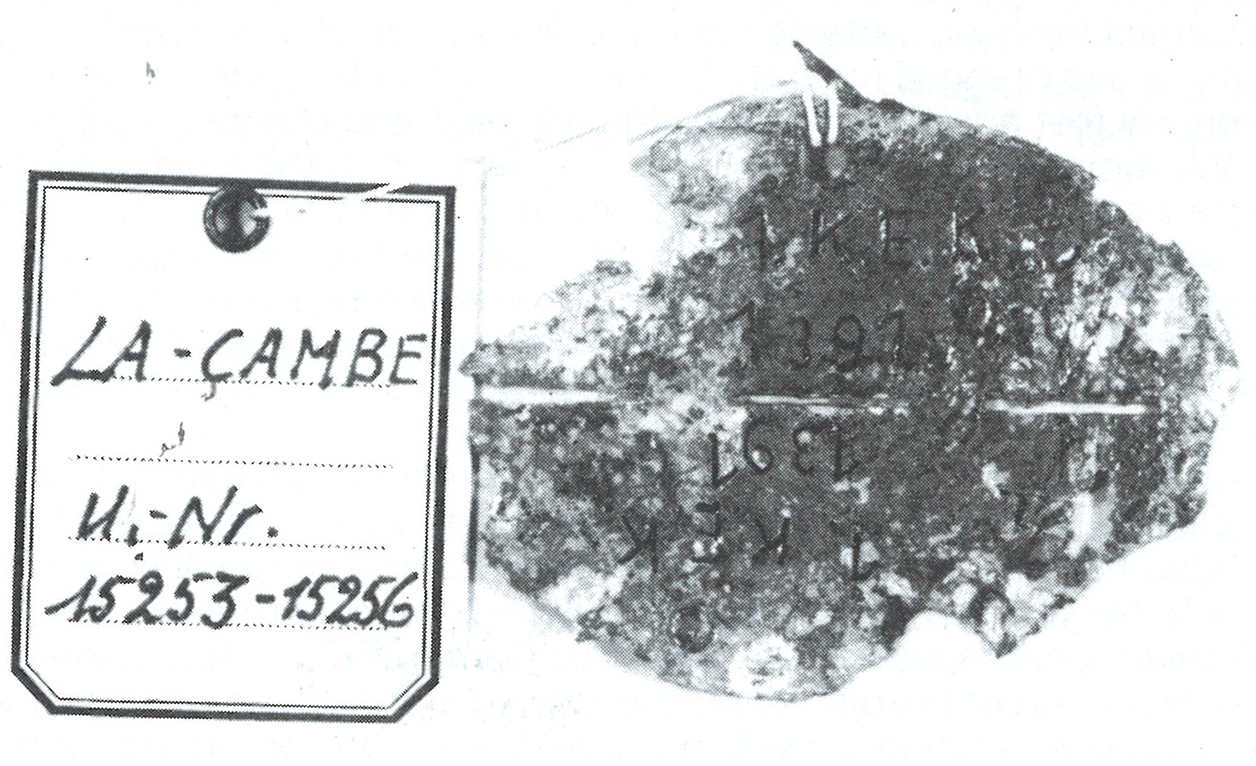
Pistol and
identificationsdisk found in the
unmarked field grave identifying
Wittmann and his crew

Disinterring
the crew of Tiger "007"of the
"SS Schwere Panzer Abteilung
101" |
EXHIBITS
On 7JUN2019 we went to the
location where, from
photographic evidence, the
destroyed Panzerkampfwagen VI
tank of Micheal Wittmann stood
after it was shot and
subsequently exploded in a field
next to the Caen-Falaise highway
in the summer of 1944. |
|
The location
We found the location in a
pasture full of tall wheat, wet
from recent rain showers. |
|
(click to
enlarge)
_small.jpg)
_small.jpg)
_small.jpg)
Looking towards the hamlets of
Cramesnil and Saint Aignan where
the British in "A" Squadron, 1st
Northamptonshire Yeomanry
Regiment was positioned.
_small.jpg)
_small.jpg)
_small.jpg)
Looking towards to the hamlet of
Gaumesnil where the Canadian "A"
Squadron, Sherbrooke Fusilier
Regiment (27th Canadian Tank
Regiment) was positioned. |
|
We drove passed the wall around
the chateau of Gaumesnil on the
N158 Expressway because there is
no public access to it; not even
from the rural roads off the
highway. The walls show scars of
the Canadian tank troops who
made loop holes in them to fire
through. |
|
(click to
enlarge)
_small.jpg) _small.jpg) _small.jpg) _small.jpg) |
The gravesite
We also visited
SS-Hauptsturmführer Michael
Wittman’s grave (plot 47, row 3,
grave 120) on the La Cambe
German military cemetery and found
it surrounded by wreaths and covered
in tokens of - questionable -
admiration. |
|
(click to
enlarge)
_small.jpg)
_small.jpg)
_small.jpg)
_small.jpg) |
|
Back to Battle Studies
 |
| |


